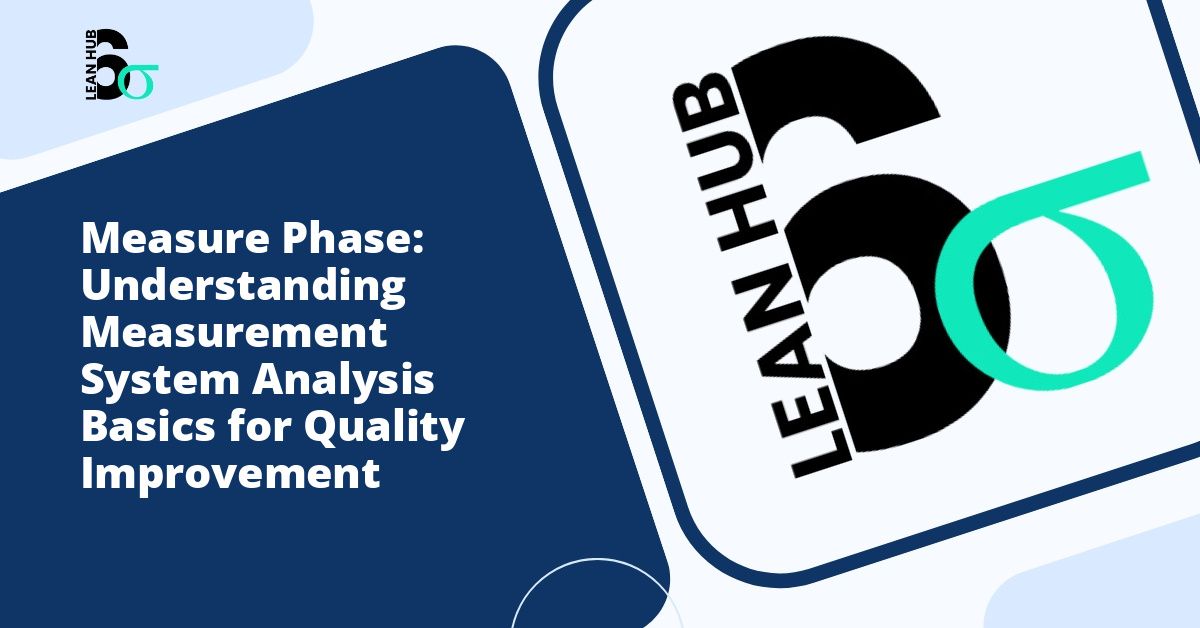In the world of process improvement and quality management, precision matters. When organizations embark on lean six sigma initiatives, one of the most critical yet often overlooked elements is the operational definition. These clear, unambiguous descriptions form the foundation of any successful measurement system, ensuring that everyone involved in a project speaks the same language and understands exactly what is being measured.
Without proper operational definitions, teams risk collecting inconsistent data, drawing incorrect conclusions, and implementing solutions that fail to address the real problem. This comprehensive guide explores the vital role of operational definitions in Six Sigma methodology and provides practical insights on how to create definitions that drive meaningful results. You might also enjoy reading about What is Measurement Systems Analysis and Why It Matters in Six Sigma.
Understanding Operational Definitions in Quality Management
An operational definition is a clear, precise description of what you are measuring and how you will measure it. It removes ambiguity by specifying the exact criteria, methods, and conditions under which a measurement or observation will be made. In the context of Six Sigma projects, operational definitions ensure that data collection is consistent, repeatable, and reliable across different team members, shifts, locations, and time periods. You might also enjoy reading about How to Conduct a Gage R&R Study: Complete Step-by-Step Guide for Quality Improvement.
Consider the seemingly simple task of measuring “customer satisfaction.” Without an operational definition, ten different team members might interpret this metric in ten different ways. Does it refer to survey scores? Repeat purchase rates? Complaint frequency? The number of positive reviews? An operational definition eliminates this confusion by specifying exactly what constitutes customer satisfaction for your particular project and how it will be quantified. You might also enjoy reading about Gage R&R Study Explained: Understanding Repeatability and Reproducibility in Quality Management.
Why Operational Definitions Matter in Lean Six Sigma
The lean six sigma methodology is built upon data-driven decision making. However, data is only as valuable as its accuracy and consistency. Operational definitions serve several critical functions in ensuring measurement system integrity:
- Consistency: They ensure that everyone collects and interprets data in the same way, regardless of who performs the measurement or when it occurs.
- Clarity: They eliminate subjective interpretations and personal biases that can corrupt data collection efforts.
- Reproducibility: They allow measurements to be replicated by different people at different times with the same results.
- Communication: They create a common language that facilitates clear communication among team members, stakeholders, and management.
- Validation: They provide a basis for assessing the reliability and validity of your measurement system.
The Recognize Phase and Operational Definitions
While many Six Sigma practitioners are familiar with the DMAIC (Define, Measure, Analyze, Improve, Control) framework, the recognize phase represents an emerging concept in some lean six sigma adaptations. This preliminary stage focuses on identifying opportunities for improvement and recognizing patterns or problems that warrant formal project initiation.
During the recognize phase, operational definitions play a preparatory role. Teams begin to identify what metrics matter most to the organization and start conceptualizing how these metrics should be defined. This early attention to measurement clarity helps ensure that when a project formally enters the Define phase, the team already has a solid understanding of what they will measure and why it matters.
The recognize phase benefits from operational thinking by encouraging teams to move beyond vague problem statements like “quality is poor” or “customers are unhappy” toward specific, measurable observations such as “defect rate exceeds 3.4 per million opportunities” or “customer satisfaction scores average below 7 on a 10-point scale.”
Components of an Effective Operational Definition
Creating robust operational definitions requires careful consideration of multiple elements. A complete operational definition should include the following components:
The Characteristic Being Measured
Clearly state what you are measuring. Be specific about the attribute, feature, or quality characteristic under consideration. For example, rather than “product quality,” specify “surface smoothness of painted panels.”
The Measurement Method
Describe exactly how the measurement will be taken. What tools or instruments will be used? What procedure will be followed? Include sufficient detail that someone unfamiliar with the process could replicate your measurement approach.
The Decision Criteria
Establish clear thresholds or standards for evaluation. Define what constitutes a pass or fail, acceptable or unacceptable, conforming or nonconforming. These criteria should be objective and quantifiable whenever possible.
Examples and Illustrations
Provide concrete examples that demonstrate the operational definition in action. Include both positive and negative examples to illustrate boundary conditions and edge cases.
Creating Operational Definitions: A Step-by-Step Approach
Developing effective operational definitions is both an art and a science. Follow this systematic approach to create definitions that enhance your Six Sigma projects:
Step 1: Identify What Needs Defining
Begin by listing all the key metrics, characteristics, and variables relevant to your project. Focus on the critical-to-quality (CTQ) characteristics that directly impact customer satisfaction or process performance.
Step 2: Research Existing Standards
Before creating new definitions, investigate whether industry standards, regulatory requirements, or organizational guidelines already exist. Building on established definitions saves time and facilitates benchmarking.
Step 3: Draft Initial Definitions
Write preliminary definitions using clear, simple language. Avoid technical jargon unless absolutely necessary, and define any specialized terms you must use. Focus on observable, measurable characteristics rather than subjective judgments.
Step 4: Test for Clarity and Completeness
Share your draft definitions with team members and ask them to apply the definitions independently to the same set of items or situations. Compare results to identify inconsistencies or ambiguities that need refinement.
Step 5: Refine and Document
Based on testing results, revise your definitions to eliminate confusion. Document the final operational definitions in your project charter or measurement plan, making them easily accessible to all team members.
Step 6: Train and Validate
Ensure all data collectors receive training on the operational definitions. Conduct measurement system analysis studies to validate that your definitions produce reliable, repeatable results.
Common Pitfalls to Avoid
Even experienced practitioners sometimes struggle with operational definitions. Watch out for these common mistakes:
- Vagueness: Using imprecise terms like “approximately,” “usually,” or “mostly” introduces ambiguity. Be specific about quantities, frequencies, and thresholds.
- Complexity: Overly complicated definitions confuse data collectors and increase measurement error. Strive for simplicity without sacrificing accuracy.
- Subjectivity: Relying on personal judgment or opinion rather than objective criteria leads to inconsistent measurements. Replace subjective terms with quantifiable standards.
- Incompleteness: Failing to address all relevant aspects of the characteristic being measured creates gaps that different people will fill differently.
- Inflexibility: Being unwilling to revise definitions when testing reveals problems perpetuates measurement system weaknesses.
Real-World Application Examples
Consider these examples of operational definitions in practice:
Weak Definition: “On-time delivery means the product arrives when expected.”
Strong Operational Definition: “On-time delivery is achieved when the product arrives at the customer’s designated receiving location within the delivery window specified on the purchase order. The delivery window is considered met if arrival occurs no earlier than 24 hours before and no later than the end of business (5:00 PM local time) on the promised delivery date. Verification is based on the carrier’s delivery confirmation timestamp.”
The strong definition specifies exactly what constitutes on-time delivery, how the delivery window is defined, and how verification will be performed, leaving no room for interpretation.
The Impact on Project Success
Investing time in developing solid operational definitions during the early stages of a lean six sigma project pays substantial dividends throughout the project lifecycle. Teams with clear operational definitions experience fewer data collection errors, reduced rework, faster cycle times, and more confident decision-making. These definitions become particularly valuable during the Control phase, when standardized measurements must be sustained over time.
Moreover, operational definitions facilitate knowledge transfer and organizational learning. When projects conclude, well-documented operational definitions become organizational assets that can be applied to future initiatives, creating consistency across multiple improvement efforts.
Conclusion
Operational definitions represent the foundation of effective measurement in Six Sigma methodology. By clearly specifying what you measure and how you measure it, these definitions eliminate ambiguity, ensure data consistency, and enable objective decision-making. Whether you are in the recognize phase of identifying improvement opportunities or deep into a formal DMAIC project, investing effort in creating robust operational definitions will significantly enhance your chances of success. Remember that good operational definitions are clear, complete, testable, and focused on observable characteristics. Take the time to develop them properly, and your Six Sigma projects will benefit from more reliable data, better insights, and more sustainable improvements.








